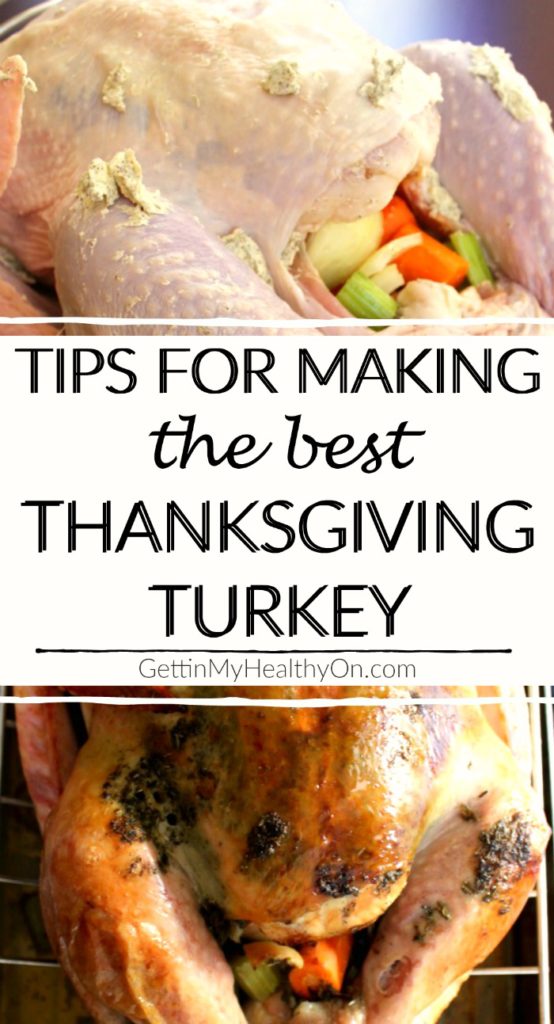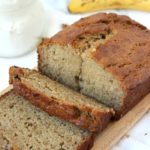I’m not sure where fall has gone, but somehow next week is already Thanksgiving! In honor of the food-centric holiday, I wanted to highlight some of the tips I’ve jotted down over the past four or so Thanksgiving dinners I’ve cooked. More specifically, I’m talking about the star of the show: the turkey.
Cooking the Thanksgiving turkey can be extremely intimidating because, most likely, you’ve only got one shot to get it right (and there are probably others relying on you). I don’t know how I’ve managed to do it, but every time I’ve cooked a turkey, it’s come out juicy and tender. I was absolutely shocked the first time because I had no idea what I was doing. Even now, after I’ve made several over the years, I still get really nervous and cross my fingers it works out.
One thing that has made a huge difference for my peace of mind while planning and preparing the turkey is to keep notes of what worked well, so I make sure to do it following year (and also, what I would do differently). Since Thanksgiving is a yearly event, I tend to forget the finer details of how to make the best turkey possible, so being able to go back to my notes makes all the difference.
I’m no chef over here, but with a combo of yearly turkey research (I still second-guess myself sometimes) and my own personal experience preparing the large bird, I feel pretty good about my cooking system every Thanksgiving. That’s why I finally shared my Herb Roasted Turkey recipe last year, because it’s a recipe I’ve been perfecting over the years and now carefully follow when I’m faced with cooking a turkey.
To hopefully help others as they begin thinking about their turkey prep, I’m sharing a collection of tips I’ve learned in my own kitchen.

When to Buy Your Turkey
If you’ve got the freezer space, you can buy a turkey months ahead of time. But let’s be real, very few of us are that prepared. At the very least, try to buy your frozen turkey about 2 weeks ahead of time, because your size options will get very picked over (8 lbs. vs. 22 lbs? Ughhh). Store it in the freezer until you’re ready to begin the thawing process (see below for the safest methods).
Thawing Frozen Turkeys
When you think your turkey is completely thawed out, keep thawing it out. The inner cavity holds onto icicles like you wouldn’t believe. The general rule: defrost in the fridge 1 day for every 4-5 pounds. If you’re running out of time, though, you can defrost it much faster soaking in water. To do this, submerge the turkey in a cold water for 30 minutes per pound. Replace the water every 30 minutes. (Never use warm water; it should always be 40° or lower.) If you’re doing the water thawing method, make sure you do this so it finishes thawing right before you plan to cook.
Safety Tip: Never defrost a turkey sitting out at room temperature, because bacteria will begin to grow and can contaminate the meat. Also, the USDA recommends buying a fresh turkey no more than two days before you plan to cook it. With that in mind, make sure not to thaw your turkey too early (AKA, no more than 2 days early). Read more about turkey thawing safety tips here.
For Juicy Turkey Meat
- Let the raw (pre-brined) turkey get to room temperature before cooking (about 1-2 hours). This allows for even cooking so the outer meat doesn’t get too dry. (The U.S. Department of Health & Human Services advises not to leave a turkey out more than 2 hours, because that’s the point when harmful bacteria will begin to thrive.)
- Put butter under the skin. This grosses me out sometimes, but it’s a MUST in my book. Whether it’s plain butter or my herb compound butter recipe, spread pockets of butter between the skin and the meat (which may require breaking some connective tissues to get it deep under the skin). As the butter melts and soaks into the meat as it cooks, you’ll increase the juicy factor.
- Open the oven door as little as possible, because each time you’re letting out moisture and heat. Here’s a general rule for checking if it’s done (so you’re not constantly opening the oven door): start checking your turkey for doneness about 30 minutes before the recommended end time. If it’s not there yet, check again every 15 minutes until it reaches 165 degrees (process described in my next point); then remove it from the oven to rest.
- Use a meat thermometer (inserted deep into the thigh) to check when it reaches 165° F. The pop-up thermometer is often set for 180°, which is technically hotter than you need (165° is considered safe for poultry, plus it keeps cooking even after it’s removed from the oven). FYI: in 2006, the FDA advised the breast meat reach 165° and the thigh meat reach 180°, but later revised its recommendation saying 165° overall is safe to consume. In the end, do what you feel most comfortable with, but know that a temp higher than 165° may result in drier meat.
- Once it’s cooked, let the turkey rest for about 15 to 30 minutes to seal in the juices.
For Crispy Turkey Skin
- Before cooking the turkey, use paper towels to pat the raw bird as dry as possible (including inside the cavity) to absorb as much moisture as possible. (Make sure to dispose of the paper towels immediately after to avoid cross-contamination.)
- In addition to putting butter underneath the skin, spread butter on the outside of the skin prior to cooking.
- Cook the turkey at a higher temperature at first to help render out some fat up-front, helping crisp the skin. Then cook at a lower temperature for the remainder of the time.
- If the skin has browned way too early, tent aluminum foil over the turkey to help slow down further browning and prevent burning.
Oh, and another pro tip: most frozen turkeys you buy at the grocery store are pre-brined. I’ve never dry- or wet-brined a turkey before and I’m not about to start because that requires more planning than I’m into. (Lord knows Thanksgiving is enough work.) If you’re not sure (i.e., me a few years ago), check the ingredients of your pre-packaged turkey—if it includes something like “Contains up to 8% of a solution of water, salt, spices, and natural flavor” (à la Butterball), it’s already brined. You’re welcome.
And that just about sums it up! Make sure to visit my Herb Roasted Turkey recipe post if you want to see more specifics on how I like to prepare my Thanksgiving turkey. Best of luck to you if you plan to cook a turkey this year!




